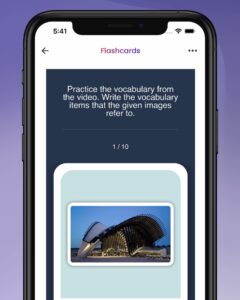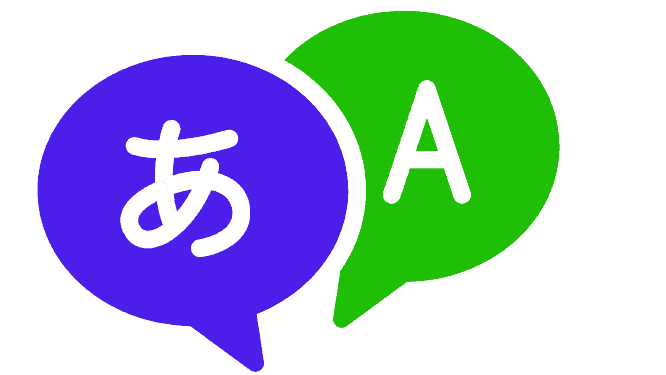Finding the best language learning app may be intimidating, and learning a new language can be difficult and time-consuming. It’s hard to choose a language learning app among the numerous on the market. You can be concerned about wasting your time and money on an app that falls short of your needs.
Fortunately, there are a number of important variables to take into account when choosing a language learning app. It includes your learning preferences, objectives, budgetary limitations, and the app’s features. You can choose an app that suits your requirements and aids in your language learning objectives by considering these elements and examining the available applications. We will thus go through the measures you may take to select a language learning application for you in this post.

Factors to consider when choosing a language learning app
1. Assessing Your Learning Needs
Before searching for language learning apps, it’s important to assess your learning needs. This step will help you decide what language you want to learn, what you want to do with it, and why you want to learn it. When choosing the language you wish to learn, bear in mind the following two important factors:
Identifying the Language you Want to Learn: Your personal or professional objectives may have a big impact on the language you choose to study. For instance, learning the local language might enable you to speak more effectively and acquaint yourself with the culture of the destination country if you have trip plans there. Do you you work in a global sector? Learning a language that’s popular in your line of work might improve how effectively you interact with customers or coworkers.
Research in-demand languages: Investigating the most in-demand languages is another technique to decide on the language you wish to study. These are languages that are spoken by many people and can help you grow personally or professionally. For instance, some of the most in-demand languages in the world right now include Mandarin Chinese, Spanish, and Arabic. You can improve your chances of being hired or doing business in areas where one of these languages is spoken by studying it.
2. Your Motivation and Learning Style
While picking up a new language can be rewarding, it can also be difficult. It’s crucial to evaluate your motivation and learning style before selecting the best language learning app for you. When evaluating your motivation and learning style, take into account the following two important factors:
Find out what inspires you to study: You can retain your commitment and concentrate on the learning process by being aware of your reason for learning a new language. For personal development, professional success, or to interact with loved ones, why are you studying a new language? Once you’ve determined what motivates you, you may create reasonable objectives and benchmarks to help you stay motivated and on track.
Identify your learning style: Everyone learns differently, and knowing your learning style might help you pick a language learning app that fits to your preferences. For instance, if you learn best visually, you should choose an app that uses movies or visuals to explain new words and grammatical rules. Prefer a more involved approach? You can choose an app that incorporates quizzes or games to reinforce your learning.
3. Your Level of Proficiency

When learning a new language, from where to start? To pick the best language learning programs, you must to examine your language competence. Here are two crucial factors to take into account when determining your level of proficiency:
Establish a starting point: Choosing your beginning point is essential before you begin learning a new language. Are you just learning the language, or do you already know the fundamentals? You may choose an app that is suitable for your present level of expertise by evaluating your starting point. While some applications are meant for intermediate or advanced language learners, others are geared for total novices.
Look for apps that cater to your proficiency level: Once you know where you should start, you can look for language-learning applications that are appropriate for your level of competence. Search for applications that include courses, exercises, and activities that are appropriate for your present level of knowledge. Additionally, it’s a good idea to choose an app with tools for tracking your progress, including exams or quizzes.
4. Budget
Budget is an essential factor to consider when selecting a language application. According to CivicScience, most people don’t want to pay for language apps. Two crucial variables to consider while budgeting for language learning are:
Determine your budget for language learning: It’s crucial to decide your language learning budget before you start looking at language learning apps. While some language-learning applications are free, others demand a one-time fee or a membership.
Take into account your willingness to invest money on language learning as well as how long you want to use the app. Always keep in mind that the most costly app may not always be the best. On the flip side, a free app can have all the functionality you want for successful language learning.
Look for applications that are affordable: Once you’ve calculated your language-learning budget, look for language-learning applications that fall within your price range. Some applications have a free trial period that you may use to see whether they’re a suitable match for your learning requirements. To get the most for your money, it’s also a good idea to read reviews and compare features.
5. Reviews and Ratings
After analyzing your learning requirements, examine language learning applications to determine the best match. Here are two important things to think about while assessing any app:
Check overall ratings and reviews: Examining an app’s total ratings and reviews is one of the simplest methods to evaluate it. Look for applications with a high user rating and a lot of good reviews. Remember that some unfavorable reviews are unavoidable, but if an app receives a lot of them, it might be cause for concern.
Look for reviews from users with similar needs: It’s crucial to read reviews from people whose demands are similar to your own while reading reviews. Checkout the app evaluations from other business people if you’re studying a language for professional reasons.
Look for reviews from other novices if you’re a total newbie. You may get a better sense of how well the program satisfies your learning goals by reading reviews from people with comparable needs.
6. Check Content and Curriculum

When judging language-learning apps, it’s important to look at their most important features. Here are two key factors to consider when evaluating the content and curriculum of language learning apps:
Look for apps with comprehensive content: If you’re comparing language learning applications, search for ones with extensive material. A good language-learning app should have a range of lessons, tasks, and games to help you learn the language well. The app should also offer a clear learning path to help you progress through the content.
Check if the app covers all aspects of the language: A excellent language learning app should teach grammar, vocabulary, pronunciation, and conversational skills. To practice each language skill, look for applications that provide a range of tasks and activities. The app should also provide feedback and corrections to help you improve your skills.
7. Learning Activities and Exercises
Look for interactive and engaging learning activities: Look for language learning applications that provide dynamic and fun learning exercises to increase the effectiveness and engagement of your language learning.
Games, tests, flashcards, and other exercises that make learning the language enjoyable and interesting may be included in these activities. Your learning results may be improved by engaging in interactive activities that keep you motivated and interested.

Check if the app offers diverse exercises for different skill levels: A quality language learning app should include a variety of tasks for users of various ability levels.
If you’re a novice, seek for applications that include fundamental activities to aid with your language learning. If you’re an intermediate or advanced student looking to hone your abilities, seek for applications that provide more challenging activities. The app should also adjust to your skill level.
8. Feedback and Progress Tracking
Look for apps with built-in progress tracking: Look for applications with integrated progress monitoring to make sure your language learning is moving forward. You may use this tool to track your development over time.
Monitor the number of lessons you’ve finished, how much time you spent studying, and your level of skill. You can maintain motivation and see how far you’ve gone in your language study by keeping track of your progress.
Verify the app’s ability to provide customized feedback: Personalized feedback is a crucial component to take into account. A quality language-learning app will provide feedback that is customized to your requirements and learning preferences.
This could include comments on your vocabulary, grammar, and pronunciation as well as pointers on how to improve your abilities. You can identify your areas for improvement and get the direction you need to advance in your language study with personalized feedback.
9. Interactive Features and Community Support

Look for apps with interactive features like games or chatbots: Language learning may be made more interesting and enjoyable by interactive elements like games and chatbots.
These elements may provide you a more immersive language learning experience and allow you to practice your language abilities in an environment that feels more natural. Look for interactive elements in language learning websites that suit your demands and learning preferences.
Check if the app has a community forum or language exchange feature: Having a group of people to practice with may be quite beneficial while learning a language, which can be a social activity.
To interact with other language learners and improve your communication skills with them, see whether the app provides a community forum or language exchange option. These features can provide you with a supportive environment to practice your language skills and help you stay motivated.
10. Accessibility and Device Compatibility
Verify the app’s compatibility with various devices: Make sure the language learning program you choose is usable on a variety of platforms, including smartphones, tablets, and desktop computers.
This makes it possible for you to practice your language abilities whenever you want, wherever you are, and with whatever device you have available. Verify the app’s compatibility with your device’s operating system and any other relevant considerations.
Look for apps with offline accessibility: The app’s offline use is a crucial additional consideration. whether you don’t have access to the internet or wish to use less data, it’s crucial to find out whether the application can be used without an internet connection. Additionally, offline accessibility may help you improve your language abilities when traveling. Especially if you don’t have internet connection, such as during a commute or on a plane.
11. Testing and Evaluating the App
After identifying your learning goals and assessing language learning apps’ essential features, try and examine the app to make sure it fulfills your needs. Two important aspects to think about while testing and assessing language learning applications are as follows:
Demo or Free Test: The majority of language learning apps include a free trial or demo version so you can try them out before buying. Utilize these free trials to see if the app satisfies your learning requirements and preferences. You will be able to test the app’s features and user interface during the free trial time to see how user-friendly it is.
User Experience and Interface: The user experience and interface of a language learning app can significantly impact your learning progress and engagement. Consider the app’s navigational simplicity, user-friendliness, and if it offers an interesting and entertaining learning experience while assessing it.
It might be tough to maintain motivation and concentrate on your learning objectives while using language learning applications that are tricky to use or have a crowded UI. When evaluating the app, consider how simple it is to access the many features and activities. See if the app has a pleasing visual aesthetic, and whether learning is a pleasant and engaging experience.
12. Learning Efficacy

Analyze the app’s capacity for teaching: The effectiveness of the language learning applications you choose is among the most important things to take into account. Think about how well the app will assist you in learning the language and achieving your learning objectives while assessing it.
Analyze the app’s educational objectives and how it helps you advance toward attaining your learning objectives. Does it provide useful drills and activities that improve your language abilities? Does it provide you individualized feedback that enables you to spot your areas for development?
Look for proof of successful outcomes and user feedback to gauge the app’s effectiveness in teaching. Look for endorsements and reviews from other language learners who have used the app. You may look up the app’s ranking and results on tests of language competence.
13. Cost and Subscription Models
To choose the language program that will fit your budget the best, it is essential to examine membership options and prices. While some applications may provide limited free access or free trials, others may charge a monthly or yearly membership fee.
Look for applications with adjustable pricing: Look for apps that let you pay for them in different ways, like monthly, quarterly, or yearly payments. Additionally, think about if the app provides a one-time payment option or several subscription tiers with different benefits.
To make sure you can afford the app in the long run and get the most out of your investment, you must assess the app’s price and subscription structures. When contrasting the cost and subscription plans of various language learning applications, take into account your spending limit and educational requirements.
14. In-App Purchases and Extras
Verify if the app provides extras or in-app purchases: Check if the app provides any in-app purchases or extras before determining the cost of a language learning app. These can have extra features or material that isn’t covered by the basic membership package.
Look for applications with fair pricing: In the event that the application’s pricing does include in-app purchases or extras, it’s crucial to assess the price structure and decide if it is fair. Think about if the additions or features are required for your learning requirements. Are they worth the additional expense?
Conclusion
It might be difficult to choose the best language learning applications, but you can make a well-informed decision by taking into account your objectives, finances, learning preferences, and learning style.
Always test and analyze an app before signing up for a subscription plan, and seek for applications that support your learning objectives. You can achieve your language competence objectives and widen your horizons with the proper language study apps.
FAQs
A language learning app should complement your learning objectives, thus it’s important to think about your goals before choosing one. For instance, you should opt for an app that stresses business vocabulary and communication abilities if you wish to learn a language for professional reasons.
You may take a learning type quiz or assessment to find out what works best for you.
While content and curriculum are important, you should also take into account other aspects like learning exercises and activities, feedback and progress monitoring, interactive features and community support, accessibility and device compatibility, price and subscription models, as well as your personal preferences.
Yes, it is strongly advised to check out the app’s free trial or demo before subscribing. It will give you an idea of the features, user interface, and learning effectiveness of the app.
Yes, you can learn a language with a budget-friendly app. Numerous applications are offered at various pricing ranges, and some of them also include free material.
Depending on your schedule and learning objectives, you should dedicate a certain amount of time to using an app for language learning. To achieve development, it is advised to put in at least 15 to 30 minutes per day.
Because various applications cater to different learning methods, it’s important to examine your learning preferences. Apps vary in their emphasis on visual, aural, and gamification elements. To make studying more pleasurable and successful, choose an app that fits your chosen learning style.

Meet Bill, a French language teacher and blogger who specializes in testing various language learning apps. He has been teaching French for nearly 4 decades and holds a Bachelor’s degree from Manhattanville College. With a passion for technology and how it can enhance language learning, Bill has spent years testing and reviewing different language learning platforms. His blog provides valuable insights into the pros and cons of each app, as well as tips for language learners of all levels.
